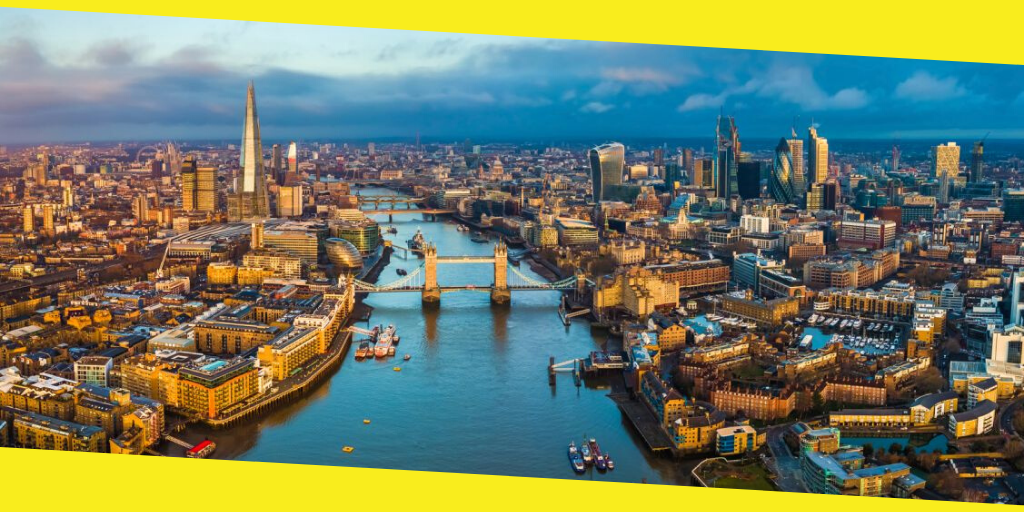Can Our Infrastructure Cope With the Rising Population?
There is no denying that the UK population is growing at an alarming rate. The upper dependents, or those of state pension age (65+) constituted for 18.2 per cent of the population in mid-2017, a rise by more than two per cent from only a decade before. The baby boomer generation — those born between 1945 and 1964 — are nearing, or have already reached, retirement age. Furthermore, thanks to technologic developments within the health care system, baby boys born between 2015 and to 2017 are predicted to live to 79, while females are expected to surpass 82 years — both of these figures significantly higher than they were ten years prior.
Back in 1939, the British population stood at 47.55 million. 60 years later, just before the turn of the millennium, that figure had rose to 58.68, charting a climb of 11 million over six decades. On May 19th, 2019, that same statistic was measured at 66.91 million, and by 2039, as we mark the 100th anniversary of the start of the Second World War, analysts propose the occupants of the United Kingdom will be counted at 74 million. The only word used to describe this growth could be exponential.

(https://www.migrationwatchuk.org/briefing-paper/243)
No matter where you go in 2019, you are never more than half an hour away from a conversation built around concerns around this rising population. However, do these arguments that have supported much of the Brexit campaign warrant any real justification, or is it simply just scaremongering?
Tackling the debate from a different perspective here with Lookers, who sell the Nissan X-Trail, we have decided to examine the strain the significant increase in population is having on our infrastructure, while similarly analysing whether transport constructions and the likes, built more than a century ago, are going to be able to withhold the weight of humankind.
Bridges
We often cross bridges without even batting an eye lid, simply because we have become so accustomed to their presence in everyday life. In London, there are 33 different structures built over the Thames, providing ease of travel for pedestrians, motor vehicles, and thanks to swing bridges, boats. Tarr Steps in Exmoor National Park is considered to be the oldest bridge in the country, with records suggesting its infancy traces back as far 1000 BC. Spanning the River Witham, the High Bridge at the bottom of Lincoln, is the oldest river crossing in the country to still have houses built on top of it — its creation dates back to 1160. Originally housing a chapel, the bridge now supports the weight of a number of timber framed shops, including a traditional English bakery and café. Despite existing for just shy of 1000 years, the bridge has proved its worth and shows no sign of decay.
If we head up north, the crossing between Edinburgh and Fife, connecting Queensferry to North Queensferry, has, always been displayed immense levels of manufacturing ingenuity. The Forth Bridge, a railway line stretching 2.5km and towering at a whopping height of 150ft which was completed in 1890, became the first major structure in Britain to be made of steel. Costing £3million to construct and employing a workforce of 4,600 men, the bridge is still used to this day, existing as part of the main transport link between London and Aberdeen. 200 trains use the bridge ever day, with more than three million passengers travelling across annually.
By 1950, the number of cars on Britain’s roads had reached four million and more people were looking to travel independently as opposed to taking advantage of the public transport options. This life choice encouraged the further development of the aptly named Forth Road Bridge. Opened in 1964, by Queen Elizabeth II, the bridge started to succumb to the pressures placed upon it by modern society and so the Queensferry Crossing was planned, developed, and opened in 2017. Both remain open to this day, with the Forth Road used for pedestrians, cyclists, and public transport, while approximately 78,000 vehicles cross the Queensferry every day.
Road
Its almost impossible to imagine a time when the whole of the UK wasn’t connected by motorways. When we’re forced to take an alternative route using A and B roads, the driving experience does begin to get considerably longer and particularly more stressful. However, we don’t necessarily have to time travel to find the creation of the UK’s first full-length motorway — the first section of the M1 was completed in 1959.
Crossing five county borders, the M1 runs from the now Junction 5 at Watford to Junction 18 at Rugby. Constructed in four phases, the road now consists of 47 different junctions and cost approximately £26 million to build. Back in the ‘50s, when the road was being planned, engineers of the M1 estimated that a maximum of 20,000 cars would use the road each day — now the road is used by around 140,000 vehicles on daily basis. In 2017, Highways England set aside £10 million to help ease congestion on the junctions branching off the M1 — hardly surprising when London is the sixth most congested city in the world, with 227 hours a year being lost stuck in traffic, and the M1 is the major contributor to this.
Sewage
Between 1853 and 1854 more than 10,000 people in London died from cholera. The bacterial disease, which is spread through contaminated water, causes severe dehydration and diarrhea and often prove fatal.
In 1858, a particularly hot summer in the capital, the tag of the ‘Great Stink of London’ began to circulate, thanks to the wretched smell multiplying around the city caused by the flow of foul water. Through the work of Joseph Bazalgette however, by 1866, the vast majority of London was linked with free-flowing water that was not contaminated by dirty water, thanks to the development of low-level sewers, where the water would be intercepted and transported through.
Back to 2019, the Thames river is often described as a toilet, owing to the fact 39 million tonnes of raw sewage makes its way into the water every year due to severe overflowing — in 2013, Thames Water reported this figure to be as high as 55 million tonnes. Currently, the company are hard at work building the 15-mile-long “super sewer” named Thames Tideway Tunnel. The project, expected to cost a total of £4.2 billion, is due for completion in 2024, and its development will mark the 200th anniversary of the birth of revolutionary engineer Bazalgette. The sewage system is certainly one example of a piece of infrastructure which has seriously struggled to match the demands placed upon it.
Housing
At the start of 2019, housing charity Shelter estimated that 277,000 people were without a home in England. In order to battle the ensuing housing crisis, three million new social homes will need to be built by 2040. The government announced that by 2022, they expect to build 250,000 new homes, “partially inspired by the Grenfell Tower fire” in 2017. The cost of building the necessary 3.1 million houses is expected to cost around £10.7 billion a year — this may seem catastrophic, however, consider that with considerably lower pension pots, less younger families moving into home ownership due to property prices and simply unaffordable rent prices. It appears to be the only option if we are going to prevent further tragedy.
The infrastructure that we as a nation created more than a century ago, which could not possibly have predicted the alarming rate in which the population is growing, has performed particularly well. The bridges and roads, which continually find themselves under increased strain, have withstood the test of time. The likes of the sewage system, however, despite its phenomenal achievements at first, simply couldn’t cater for the sheer velocity of waste that was due to attack it come the twenty first century — as neither did the housing industry. That said, each infrastructural section is proving that even with pressure, they can still utilise technologic developments to further enhance what currently exists.
Sources
- https://www.bbc.co.uk/news/uk-england-46788530
- https://www.tideway.london/the-tunnel/
- https://www.bbc.co.uk/news/uk-england-london-29175607
- http://www.bbc.co.uk/history/historic_figures/bazalgette_joseph.shtml
- https://www.usnews.com/news/cities/articles/2019-02-12/these-cities-have-the-worlds-worst-traffic-congestion
- https://www.highwaysindustry.com/10m-from-government-to-ease-congestion-on-the-m1/
- https://www.gov.uk/government/statistics/tsgb-2011-vehicles
- https://www.theforthbridges.org/forth-road-bridge/history/
- https://www.visitscotland.com/info/towns-villages/forth-bridges-p243711
- https://www.atlasobscura.com/places/high-bridge-glory-hole
- http://www.secret-london.co.uk/Thames_Bridges.html
- https://www.migrationwatchuk.org/briefingPaper/document/243
- file:///C:/Users/jonathan.gilpin/Downloads/Overview%20of%20the%20UK%20population%20November%202018.pdf
- https://www.ons.gov.uk/peoplepopulationandcommunity/populationandmigration/populationestimates/articles/overviewoftheukpopulation/november2018
- https://www.mcginley.co.uk/news/the-uk-s-oldest-bridges/bp324/
- https://www.migrationwatchuk.org/briefingPaper/document/243
Recommended For You
Attention: All the Young Techies in Bangalore
Most Inside
Most Inside offers high-quality recommendations and valuable updates to enhance all aspects of your life, providing premium guidance and enriching experiences.





